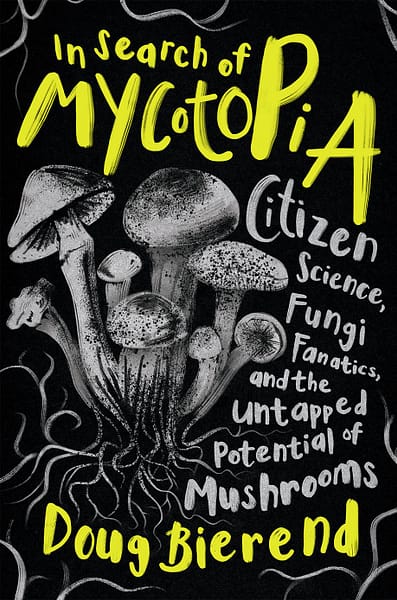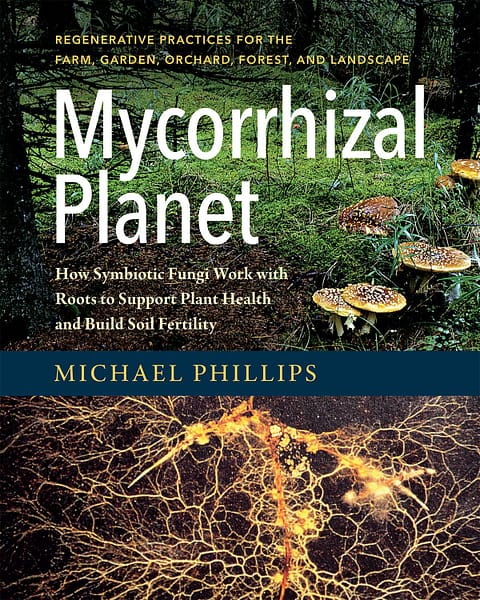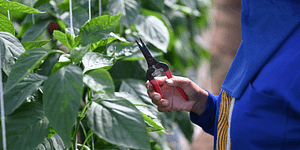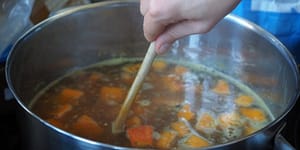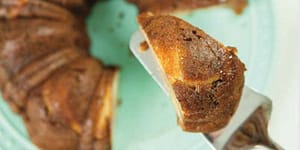Composting and Recycling Mushrooms

Beyond guaranteeing a bountiful harvest, cultivating mushrooms on various surfaces has plenty of benefits. Growing, composting, and recycling mushrooms reduces waste and helps the environment.
The following excerpt is from Organic Mushroom Farming and Mycoremediation by Tradd Cotter. It has been adapted for the web.
(Photographs courtesy of Tradd and Olga Cotter unless otherwise noted.)
Composting and Recycling Mushrooms
In addition to yielding a bountiful mushroom harvest, these products can also be used to expand mycelium into a biomass that could conceivably be used to inoculate larger waste streams or substrates for a wide spectrum of applications, including composting, mycoremediation projects, and creating value-added consumer goods such as insulation or living paper products, which are made of recycled mushroom growing media, such as spent oyster mushroom substrate, that are pressed into forms, and only need water to begin the composting process.

Pizza boxes aren’t usually recyclable due to the oils and food remnants they contain. Oyster mushrooms, on the other hand, can eat them up and then fruit, plus produce a beautiful worm composting feedstock after two flushes.
To recycle and compost with mushrooms, start by simply identifying your biodegradable waste. Separate your weekly garbage for a few weeks to determine exactly how much waste of each type—paper, cardboard, glass, plastics, food—you are generating. (This will also help you determine where you can improve consumer packaging decisions, reducing your plastic and Styrofoam purchases as you shift to packaging that can be put to better use with mushrooms.)
Finding & Re-Using Waste
Open your cupboards, look in your refrigerator, and peek in your cellar for anything you are consistently producing as waste. Check with local businesses about the waste they pay to get rid of, and you may be surprised to find them willing to let you cart off some of their trash.
Dumpsters and other sites where debris is often piled up on street corners or behind restaurants and businesses are also great areas for collecting recyclable debris. Smaller companies that cannot afford or don’t have the space for a recycling Dumpster often just flatten boxes and stack them up for trash removal; those boxes can be gold for a mushroom cultivation operation.
Projects for Recycling Mushrooms
I try to think of treating my home and life like a “space bubble,” attempting to minimize the nonrecyclable goods I bring in, pretending that landfills do not exist. Thinking this way involves a shift in consciousness where you start to look at everything available in terms of its potential to be recycled and its potential as a cultivation resource.
Here are a few of my favorite mushroom composting and recycling projects.
Cultivating Oyster Mushrooms on Spent Coffee Grounds
Cultivating oyster mushrooms on spent coffee grounds is a simple and enjoyable home activity for all ages, resulting in some good edible mushrooms to boot. If your home brewing doesn’t provide enough grounds, try asking your local coffee shop or roaster if you can leave a bucket for them to toss their grounds into, especially if they would otherwise go into the trash.
If you’re not able to inoculate your grounds with spawn right away, freeze them until you’re ready to do so; otherwise molds will form within days.
Yields from this Method of Recycling Mushrooms
Although the yields you’ll get from this method are not as high as when you use commercial oyster mushroom formulas, such as pasteurized wheat straw or cotton waste, if you factor in the production costs, the lower-yield coffee grounds method becomes as economically viable as the more sophisticated cultivation.
If you simply recycle your own grounds you can expect to produce a few pounds of beautiful oyster mushrooms a week—at which point you’ll need to create an oyster mushroom dressing, sautéing your harvest in a balsamic vinaigrette and tossing it over fresh greens crumbled with feta cheese. (Please note: although I have primarily used this process for cultivating oyster mushrooms, some European growers have successfully fruited parasols from coffee grounds.)
Step-by-Step Cultivation on Coffee Grounds
To begin, you’ll need a container with a lid, a steady supply of coffee grounds (with or without paper filters), and grain- or sawdust-based oyster mushroom spawn.
Step 1. Carefully collect the cooled and spent coffee filter, grounds and all, and place it into the container faceup. If using a press or strainer just add the grounds to your container once they are drained well.
Step 2. Massage your mushroom spawn bag to separate the grain or sawdust into individual bits to maximize the spreading capability.

Oyster mushrooms fruiting on spent coffee grounds and filters in a 1-gallon container. This cluster stripped away the threading and pushed off the lid to escape—reminding me who is in charge here.
Step 3. Sprinkle the mushroom spawn sparingly over the surface of the coffee grounds. You only need a small amount. Crack the container lid so it can breathe. The container can be located anywhere, such as a kitchen counter, garage, or any other space where there is indirect light, never direct sun.
Step 4. Add coffee grounds and filters daily, sprinkling spawn sparingly over each layer as you add more. After just a few days, mycelium will start to be visible as white threads growing together.
Step 5. Fill the container almost to the top, leaving just a few inches of space to make room for developing mushrooms. When you stop adding filters and coffee, the mycelium will finish colonizing.
Step 6. Once the container is completely colonized, expose it to diffuse natural or fluorescent light at room temperature. (If it gets direct sunlight the mycelium and mushrooms will dry up and you won’t get a harvest!) Keep the surface misted lightly and the lid just cracked, to preserve moisture. If you have filled a 5-gallon bucket or similar large container, you can drill 1/2-inch holes around the sides, every 10 inches or so, where the mushrooms can also emerge, but you will need to either mist the holes several times a day indoors or cover the container with a large, clear bag to make a humidity tent until the primordia have safely emerged and are no longer at risk of drying out.
Step 7. Two to three weeks after the colonization is complete, mushrooms should begin to form. Remember that mushrooms only form when they run out of food or space, at which point they recharge their battery and fruit. Baby mushrooms will appear overnight, so check your buckets at least once a day and keep the surface misted, though not underwater. The mushrooms should double in size every day. Harvest them when the fruitbodies’ growth slows. You may notice a powdery spore deposit forming underneath the caps when they are ready to harvest.
Step 8. After you’ve harvested the mushrooms, allow the mycelium to rest by not watering or adding any additional growing media, and it may fruit again in a few weeks. During the rest period no light is needed if you need to move the container. Soaking the coffee grounds with a generous amount of water after a few weeks of resting can help shock the mycelium into fruiting more prolifically. Once rehydrated, the biomass will respond with additional fruitings.
Step 9. After the second flush, your coffee grounds substrate will be pretty much spent as a mushroom growing medium. However, being full of fungal life, it has now become a living compost starter and can be mixed into your outdoor compost pile to help with the decomposition, or you can use it to inoculate cardboard cultures. Worms also love this spent media, so adding the grounds to your vermicomposting bin could possibly start a worm revolution.
Cultivating Mushrooms on Cardboard

Sprinkle spawn onto soaked cardboard to create a mother culture that can be expanded almost indefinitely into additional cardboard and coffee grounds.
There is cardboard all around us. The only thing missing is a little water and a mushroom starter culture, which you can either purchase or make yourself (from the coffee cultivation system above, if you like).
This method is best for fruiting oyster mushrooms, but it works well as an expansion method for generating pounds of mycelium from other wood-loving saprophytes.
Step-by-Step Cultivation on Cardboard
Step 1. Locate a large box or bin in which you can stack sheets of cardboard. A plastic bin will work best, helping to maintain humidity and promoting mushroom formation only on the inner top layer of cardboard. As a last resort you can use a cardboard box as a container; you will need to water it more often, since cardboard is prone to drying out, and mushrooms may form all over the outside, which can reduce your overall yields.
Step 2. Stack all of your cardboard in the bin, and add enough water to cover it. Let the cardboard soak until completely saturated. This may take an hour or so. After soaking, drain the excess water (into your garden) and remove the soaked cardboard from the bin.
Step 3. Layer the bottom of the bin with a few sheets of cardboard, then sprinkle a small amount of spawn across the surface. Repeat, layering cardboard and spawn, until the container is full.
Step 4. Set a lid on top of the bin, leaving it just cracked open, or lay a plastic bag over it. You want the cardboard inside to remain humid but also to allow it to breathe.
Step 5. Monitor the moisture level inside the bin. You want to keep the cardboard moist but not too wet. If it happens to dry out, you can soak the mass overnight and pour out the excess water the next day. Most mycelium colonize best at a warmer temperature, between 65 and 85°F (18–30°C). Once the bin and cardboard is fully colonized and completely white, you have created a mother culture of cardboard spawn capable of making many more.
Step 6. At this stage, you can expand the mycelium in new bins; just separate the layers of spawned cardboard and shuffle them into additional layers of fresh cardboard in new bins. Or you can leave it alone to fruit. Fruiting will usually occur around the perimeter of the bin.
You may also consider drilling 1/2-inch holes every 8 to 10 inches around the bin. These holes can provide ventilation and a site where mushrooms can emerge, but you’ll have to mist them several times a day to keep the primordia from drying out.
Step 7. Once the growing medium in the bin is completely colonized, expose the bin to diffuse natural or fluorescent light at room temperature. Keep the lid just cracked, and mist the surface and any holes regularly.
Mushrooms will fruit, most of the time at least twice, and you can then use the spent waste as spawn or you can compost it for an excellent soil amendment. Following complete colonization, it can take several weeks to fruit mushrooms—typically slower than commercial fruiting media, such as pasturized agricultural waste. Still, the easy low-tech approach is a winner when no other options are present.

The “last gasp,” or effort to fruit after multiple flushes, by these little white oyster mushrooms (Pleurotus ostreatus) just before we add them, substrate and all, to our worm composting bins.
Mycovermicomposting
Composting with worms, known as vermicomposting, is a lucrative business, providing worms for bait shops, feed for chickens and other poultry, and some of the best compost additives for creating organic soil amendments that recharge and revive soils.
Worm castings are, ounce for ounce, one of the best and most effective natural fertilizers you can use, and they can easily be generated on home waste, including spent mushroom growing substrate.
Managing the End Product
Since the end result of mushroom cultivation is the creation of soil, and since red composting worms (Eisenia fetida) are extremely fond of mushroom mycelia, mycovermicomposting is a great way to manage the end product of your cultivation efforts. In this way, your mushrooms can reach their full yield potential while also producing a rich and valuable compost.

The worms quickly invade the entire pile, feeding on the sweet mushroom mycelium and growing medium.
Spent mushroom growing medium is essentially fully colonized with mycelium, a worm’s favorite natural food source. The sweet-smelling metabolites in the spent medium lure worms from afar to make a home and breed in the nutrient-rich substrate.
Worms for Mycovermicomposting
Red composting worms, also known as red wigglers, are vertical migrators, which are the best option for mycovermicomposting because they are able to penetrate every cubic inch of the growing medium.
Earthworms are less effective because they tend to compost horizontally, at the soil level where the fresh medium meets the old, operating in a very thin layer.
You can find commercially raised composting worms online, or you may be able to find them from local worm farmers. If you have trouble finding the worms, it’s possible to collect and raise worms that are native to your area. Although they may not be as efficient as red wigglers, it’s better than not having any worms at all.
Recycling Mushrooms With Worms: The Missing Piece
Although spent mushroom substrate or mycelium- colonized cardboard is a superfood for worms, there is a missing component that is critical for worm health and for your composting success. Worms need fine sand or grit to process the food they eat, grinding it up in their gizzard much as birds do. A small amount of your native soil mixed in with the substrate or cardboard will improve the health of the worms and thereby the speed the rate at which they produce castings.

This is the same pile eight weeks later. If you don’t turn the compost, your substrate will be fully composted into worm castings in about three to four months.
Using your native soil can also supply a dose of beneficial microbes that the worms’ gut bacteria need, giving your worm castings rich, beneficial properties.
Benefits of Using Worms When Recycling Mushrooms
Worm castings are loaded with beneficial microbes that perform essential functions for plants. A seedling selects the beneficial bacteria it needs, and those bacteria form a symbiotic biofilm on the plant’s developing root system.
The plant responds by cultivating the bacteria, allowing them to multiply and spread with the growing root system for the en- tire life of the plant. Using native soil for your worm composting additive ensures that the many symbiotic nuances are preserved and perpetuated throughout your operation.
Recommended Reads
Recent Articles
Want to spice things up for this year’s holiday feast? We’ve got you covered! From delectable pork tenderloin to Spicebush Goose, these recipes will surely delight everyone at your Thanksgiving dinner table, even those passionate turkey traditionalists. These recipes have been adapted for the web. Roast Pork Tenderloin and Plum Sauce from The Healthy…
Read MorePruning is essential for keeping protected crops healthy & balanced through the winter months. Keep reading for some helpful tips on pruning greenhouse and hoophouse plants! The following is an excerpt from The Greenhouse and Hoophouse Grower’s Handbook by Andrew Mefferd. It has been adapted for the web. Unless otherwise noted, all photographs copyright © 2017…
Read MoreSoup season is finally here! While the weather is getting colder, stocks and broths warm our bellies and fill our souls. Get started on your own classic stock this winter with help from this culinary insight and advice! The following is an excerpt from Mastering Stocks and Broths by Rachael Mamane. It has been adapted for the…
Read MoreStoring seeds is the key to having a successful growing season. Follow these tips for keeping seeds organized so you’re ready to plant as soon as the time is right!
Read MoreNothing says “fall” quite like a homemade cake or pie! Add a little twist to your apple or pumpkin-flavored seasonal desserts that will have your guests begging for more. Not only are these treats delicious, but they’re healthy as well. The following is an excerpt from The Grain-Free, Sugar-Free, Dairy-Free Family Cookbook by Leah Webb.…
Read More



